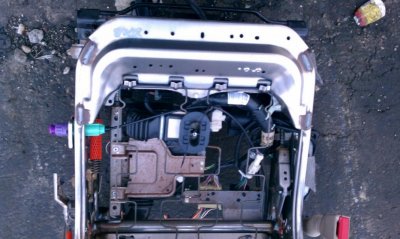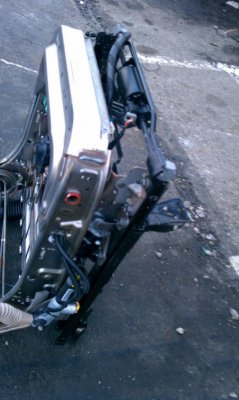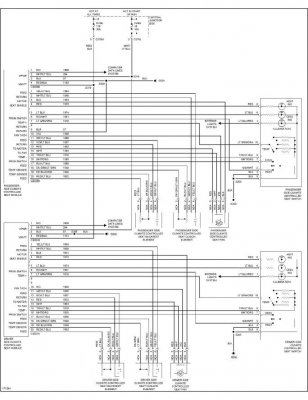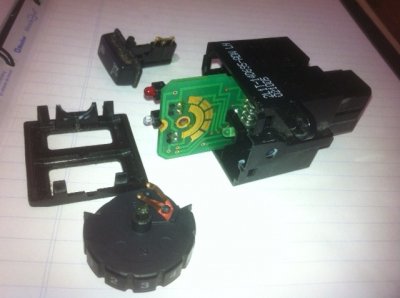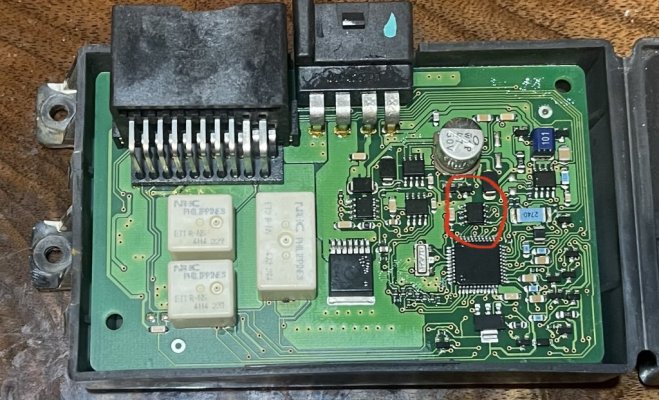snowman
Member
Okay, I have a 2003 EB with an inoperative driver seat climate control. Passenger works fine.
After hours of searching, there seems to be a lot of scattered information in various threads and sites. It's just not in my nature to take a problem to the Dealer$ to fix, and so I will gather up useful info on these seats and put them in this thread for others to use. Please use this thread for information and start a new thread with your own seat problem.
Okay, lets begin...
These seats do not use a resistive wire heating element that you can simply check with a continuity test. Instead they use a Peltier thermo-electric module that depending on the polarity of current flow, will be cool on one side and hot on the other. A fan blows across each side, one directs waste air away from the seat, the other blows the desired air into the seat cushion. A computer monitors all aspects of this system and will shut down and report a code on a detected fault.
Some points to check if you have seat trouble,
~ Make sure your fan filter is clean, and there are no airflow obstructions at the bottom of your seat.
~ Check with a mechanic or someone who can read your DTC (diagnostic trouble codes) to see if the computer is flagging a fault somewhere.
~ Note if your console light illuminates when you call for heat or cold, and how long does it stay on?
~ Unplug harness connectors and examine pins with a flashlight, pins with constant power that are exposed to water from seat washes, coffee spills etc can cause corrosion. If the pins show corrosion then its possible there's a fault where the wire crimps onto the pin.
~ Check the harness connectors behind your seat, rear passengers can get their feet in there and chafe wires or get water/snow in them.
~ There are two fuses for the system, pull them both for a minute and plug them back to see if the module reset will work. One fuse is "always hot" the other is "hot during run."
~ Each seat has it's own climate controlled seat module (CCSM) but they SHARE the same fused circuit. (ie. one fuse powers two seats)
~ The console switch is robust, but have a look for signs of spilled drinks.
~ The fans and the peltier module can be tested out of circuit.
~ Worst case you may have to replace a module or have the dealer reporgram it.
After hours of searching, there seems to be a lot of scattered information in various threads and sites. It's just not in my nature to take a problem to the Dealer$ to fix, and so I will gather up useful info on these seats and put them in this thread for others to use. Please use this thread for information and start a new thread with your own seat problem.
Okay, lets begin...
These seats do not use a resistive wire heating element that you can simply check with a continuity test. Instead they use a Peltier thermo-electric module that depending on the polarity of current flow, will be cool on one side and hot on the other. A fan blows across each side, one directs waste air away from the seat, the other blows the desired air into the seat cushion. A computer monitors all aspects of this system and will shut down and report a code on a detected fault.
Some points to check if you have seat trouble,
~ Make sure your fan filter is clean, and there are no airflow obstructions at the bottom of your seat.
~ Check with a mechanic or someone who can read your DTC (diagnostic trouble codes) to see if the computer is flagging a fault somewhere.
~ Note if your console light illuminates when you call for heat or cold, and how long does it stay on?
~ Unplug harness connectors and examine pins with a flashlight, pins with constant power that are exposed to water from seat washes, coffee spills etc can cause corrosion. If the pins show corrosion then its possible there's a fault where the wire crimps onto the pin.
~ Check the harness connectors behind your seat, rear passengers can get their feet in there and chafe wires or get water/snow in them.
~ There are two fuses for the system, pull them both for a minute and plug them back to see if the module reset will work. One fuse is "always hot" the other is "hot during run."
~ Each seat has it's own climate controlled seat module (CCSM) but they SHARE the same fused circuit. (ie. one fuse powers two seats)
~ The console switch is robust, but have a look for signs of spilled drinks.
~ The fans and the peltier module can be tested out of circuit.
~ Worst case you may have to replace a module or have the dealer reporgram it.
Last edited:


